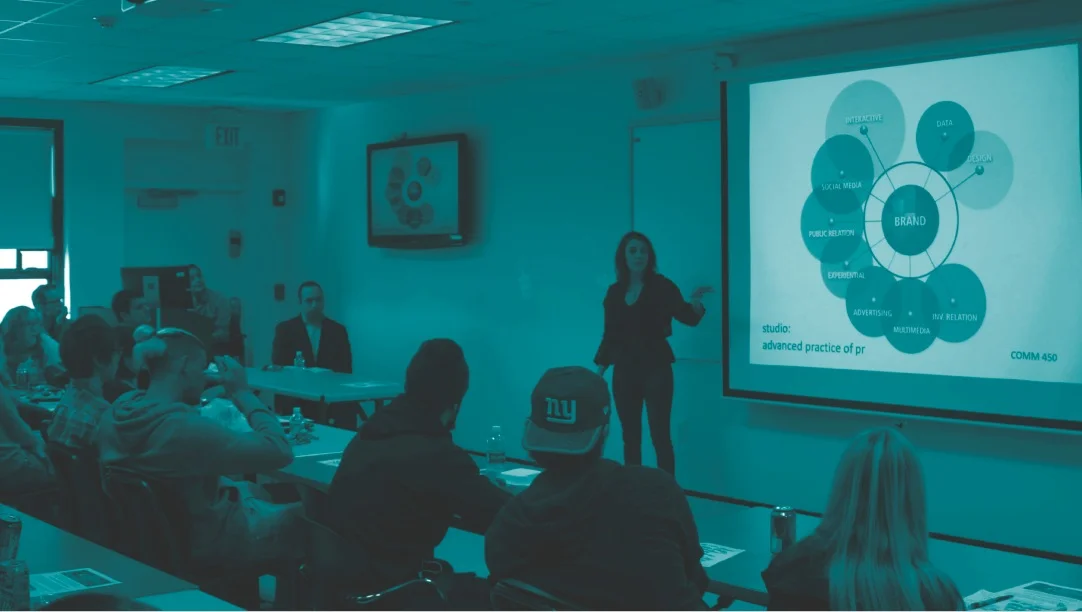



Teaching
learning every day.
Teaching
learning every day.
TEACHING Philosophy
I consider the opportunity to teach a privilege and an honor. I do not think my students do not yet know what I know. At some level, they all have instincts and passion—exactly what I started with. It is my job to locate and engage those instincts, and ignite that passion. And, once they have learned a lesson I teach, another brick on their path is laid. As their road winds and lengthens, I expect my lessons to be far back, yet visible as landmarks; the foundation of a life of doing and knowing things I may never do or learn myself. I view this as a gift of life and crucial to the process of intellectual evolution.

Tools for the real world
breadth and depth.
Tools for the real world
breadth and depth.
Results
When a student has successfully completed a course with me, I expect that student to have a deep understanding of the material covered, but also much more. The knowledge should be integrated across the advertising vertical, and also more broadly applied across many disciplines. I have helped to place many fantastics graduates in positions among the top advertising, branding and PR agencies. It is my hope they have learned that motivation, discipline and perspective are the true achievements, and that their futures can be navigated using the confidence and mastery earned through our time together.

Course Design
curriculum development and dynamic lecturing.
Course Design
curriculum development and dynamic lecturing.
As a lecturer at Mercy College since 2014, I have taught Intercultural Communication, Effective Presentations, Creative Advertising, and The Advanced Practice of Public Relations. I bring to my teaching two decades of experience at the world’s largest advertising agencies, including McCann Erickson/MRM, Publicis, Saatchi + Saatchi, Arnold Worldwide, and more—years of refining and applying strategic and creative thinking for high-profile brands in just about every industry. At the same time, the foundation of my teaching draws from liberal arts, rhetorical discourse, psychology, and social science to help students apply logic, critical thinking, and cultural sensitivity to real-world scenarios.
As full-time faculty in the Advertising Department of the School of Media and Communication at Temple University, I was tasked with evolving the Art Direction track for upper level students -- to better equip them with the tools they needed for success in the field.
Drawing from my advertising and art backgrounds, I designed the courses below to help prepare students for a career that would demand their best work and their best thinking. To this end, I stressed that the approach to each project was as important as the execution.
Students learned how to ask the right questions and how to brainstorm with direction. This laid the groundwork to then overlay fundamental design tools and visual storytelling devices essential for the best expression of their ideas.
Intercultural Communication
Fundamental course dealing with issues of bias, prejudice and sensitivity across cultures. Students act out roles to help navigate different communication styles and various types of conflict. Students self-score tests of their intercultural literacy and general acceptance
Effective Presentations
Seminal course in developing soft skills such as voice, cadence, and body language to make persuasive arguments for audiences. Students work in groups and alone crafting narrative story lines using audience and topic research, data and logic to help make thorough, engaging presentations. Students draw from fundamentals of design to visually communicate ideas for impact and resonance
Integrated Communication Strategies: Studio
Capstone course, a simulated agency where students apply for positions (strategy, management, creative). Acquire + work with real agency clients including McCann Erickson, Covenant House, and others. Students delivered integrated communications strategy, branding, and collateral for the Department of Communication and the Arts; an interdisciplinary effort including program heads and students from the Design program.
Creative Advertising
Engaging course in understanding what makes a big idea, branding, and the nature of integrated campaigns. Students learn including traditional, digital/social and experiential advertising. Students produce ideas covering creative briefs, copy development and emphasizing benefits. Final project challenges students to think creatively and holistically about introducing a new product to market, driven by audience behavior and market insights
Advertising Art Direction I
As the first in the Advertising Art Direction track, students gain a comprehensive understanding of how ideas become branded visual communications that engage, capture and persuade audiences. Through regular lecture, reading and project critique, emphasis is placed on combining the fundamental tools of graphic design with creative brainstorming to arrive at fresh, branded concepts. This course focuses primarily on concept and layout for the print medium, and lays the foundation for Art Direction II.
Advertising Art Direction ||
This advanced course emphasizes the visual, verbal, and conceptual skills of TV advertising as well as the interactive medium. Students will work with advertising strategies to create effective TV storyboards, web sites, and more. The use of typography, composition, photography, and illustration is implemented into each project.
Interactive Advertising
This advanced course explores the dynamic space of Interactive, primarily web-based media. Specifically, we explore how advertisers can use best practices in this space to create branded programs which are seamlessly integrated with offline, general advertising and marketing efforts. Attention is paid to creating interactive tactics that consider the client’s business objectives and audience experience. Lectures and practice focus on information architecture, interaction design, compelling copy and audience usability. Through group and individual projects, test and in-class assignments, students solve brand problems and extend brand personality to interactive media (web, mobile, etc.) in a way that connects with, engages and persuades audiences.
Independent Study Projects
Independent Study students work with me directly on a jointly designed, semester-long capstone project. The individually-based coursework deeply explores a topic or problem with roots in advertising, branding or marketing. Once we define the problem and discussion points, I then design a course with clearly defined benchmarks, timing and scope for the project to be completed. In the past students have focused on magazine design layout; web site competitive analyses, information architecture and design; and even a re-branding project for Temple's School of Communications and Theatre which included qualitative analyses, competitive research and recommendations.
